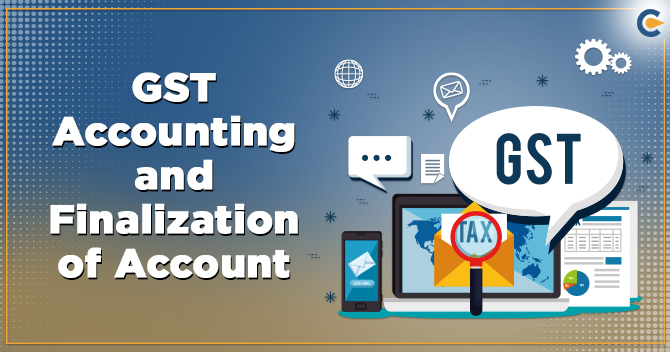GST in final accounts, In the final accounts of a business, GST (Goods and Services Tax) is treat as follows:
1. Sales:
The GST collected on sales is not consider as revenue, but rather a liability to be paid to the government. The total sales value should be record separately from the GST amount collect.
2.Purchases:
The GST paid on purchases can be claim as input tax credit (ITC), which can be set off against the output tax liability. The total purchase value should be record separately from the GST amount paid.
3. GST liability:
The GST liability is the amount of tax that a business owes to the government after adjusting the ITC against the output tax liability. This liability should be record as a separate account in the balance sheet.
4. ITC:
The ITC that a business has claim should be record as a separate account in the balance sheet. Any ITC that remains unutilized should also be record separately.
5. GST payable/receivable:
If the GST in final accounts collect on sales is more than the GST paid on purchases, the difference is a GST payable, which should be record as a liability. Conversely, if the GST paid on purchases is more than the GST collected on sales, the difference is a GST receivable, which should be record as an asset.
6. GST return:
The details of the GST collected, GST paid, ITC claimed, and the resulting liability or receivable should be summarize in the GST return. The GST return should be file with the GST department as per the prescribe due date. GST in final accounts.
In conclusion, GST should be treat as a separate liability and asset in the final accounts of a business, and the details of the GST collected, GST paid, and ITC claimed should be summarize in the GST return. It is important to maintain proper records and comply with the GST laws to avoid penalties and legal issues.
To visit https://www.gst.gov.in/
FAQs
1.How do I record GST in my accounting books?
Answer: Record GST as either an input tax (GST paid on purchases) or output tax (GST collected on sales) in your accounts, reflecting it in the respective accounts.
2. What is Input GST?
Answer: Input GST is the GST paid on purchases of goods or services use for business operations. It can be claim as a credit against output GST.
3. What is Output GST?
Answer: Output GST is the GST collect on sales of goods or services provided by the business. It is the liability that the business needs to pay to the government.
4. How do I treat GST in the Profit and Loss Account?
Answer: In the Profit and Loss Account, include only the net revenue (sales minus GST) as income, and record only the expenses net of input GST.
5. How do I treat GST in the Balance Sheet?
Answer: Input GST is shown as an asset (recoverable tax) on the asset side, while Output GST is shown as a liability (payable tax) on the liability side of the Balance Sheet.
6. What happens if my Input GST exceeds Output GST?
Answer: If Input GST exceeds Output GST, you can carry forward the excess input GST for future tax periods or claim a refund from the tax authorities.
7. Do I need to file GST returns?
Answer: Yes, businesses must file periodic GST returns (monthly, quarterly, or annually) detailing sales, purchases, input, and output GST.
8. How do I account for GST on assets and expenses?
Answer: When purchasing assets or incurring expenses, include GST in the total cost of the asset or expense, but ensure to separate it for input tax credit.
9. What records should I maintain for GST?
Answer: Maintain records of all sales invoices, purchase invoices, receipts, and GST returns filed, as these are necessary for accurate accounting and compliance.
For further details visit: https://vibrantfinserv.com/
Contact: 8130555124, 8130045124
Whatsapp: https://wa.me/918130555124
Mail ID: operations@vibrantfinserv.com
Web Link: https://vibrantfinserv.com
FB Link: https://fb.me/vibrantfinserv
Insta Link: https://www.instagram.com/vibrantfinserv2/
Twitter: https://twitter.com/VibrantFinserv
Linkedin: https://www.linkedin.com/in/vibrant-finserv-62566a259/

